Are you new to chess and struggling with how to set up a chessboard? Then this guide is perfect for you. In a matter of less than 5 Minutes, you will be able to set up the chessboard correctly every single time.
I can’t even count the number of times I set up a chess board and after a couple, it has become second nature to me. I’m sure after reading this guide, the same will happen for you.
Enjoy!
Step 1: Identify the Board’s Orientation
The chessboard has 64 squares, arranged in an 8×8 grid with alternating light and dark squares. Before setting up the pieces, ensure that the board is correctly oriented:
- Place the board between the two players.
- Make sure that a white (or light) square is in the bottom right-hand corner of the board for both players.
- If your board has numbers and letters on it, make sure that the first rank is in front of the player aiming to play the White pieces.
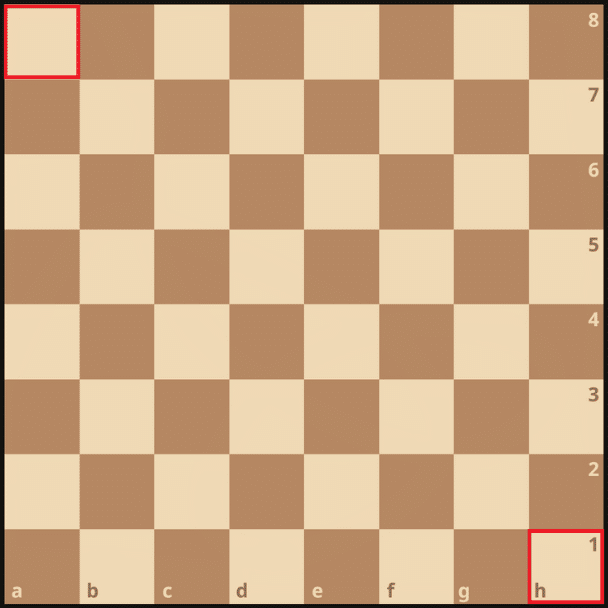
Step 2: Set Up the Pawns
Each side has eight pawns. In chess literature, each pawn has a value of one (1) point. But pay attention: if they move down the board, they can promote to a Queen and become extremely powerful! All the pawns are placed on the same rank for each side:
- Place one pawn on each of the second-rank squares for the white player (2nd row from the player’s perspective).
- Place one pawn on each of the seventh rank squares for the black player (2nd row from the player’s perspective).
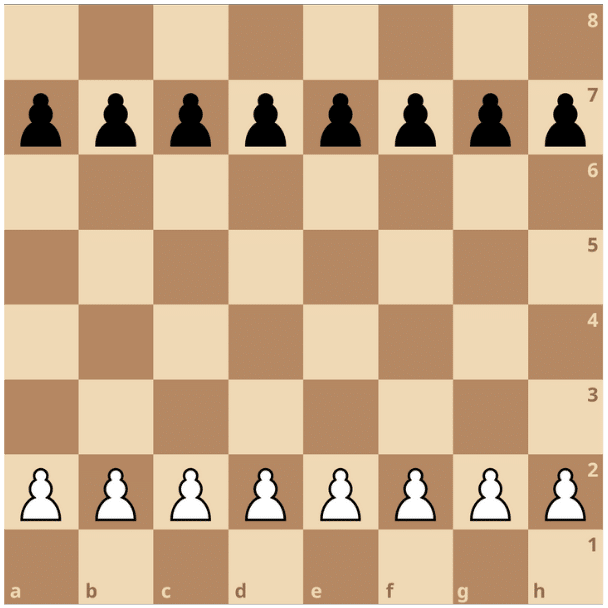
Step 3: Set Up the Rooks
The rook is a powerful piece that can move horizontally and vertically across the board. It has the value of five (5) points and each player has two rooks. In other words, a rook has the value of 5 pawns! Tosetthemup:
- Place a rook on the first rank (1st row) square in each of the corners for the white player. If your squares are named, those are a1 & h1 for white.
- Place a rook on the eighth rank square in each of the corners for the black player. Those would be a8 & h8 if your board has numbers and letters on it.
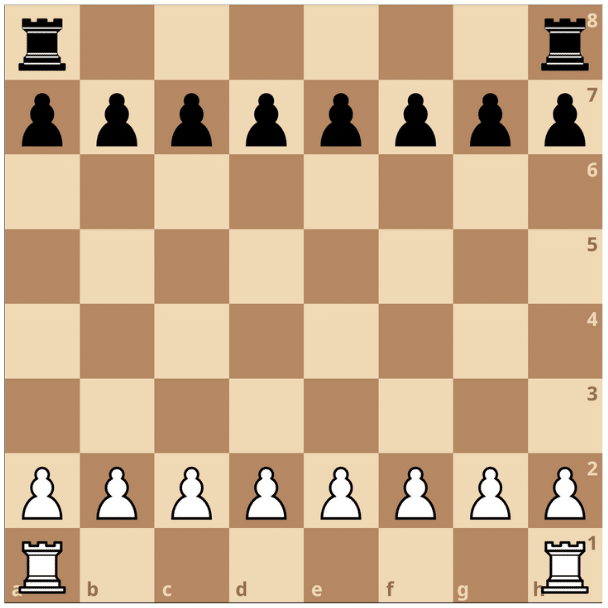
Step 4: Set Up the Knights
The knight is the only piece that can “jump” over other pieces. It moves in an L formation. Two squares forward and one to the side. Optimally placed, the Knight can cover eight important squares. That’s why chess players sometimes refer to the knight as Octopus. Each player has two knights. Each of them has a value of three (3) points. Tosetthemup:
- Place a knight on the first rank (1st row) square immediately next to each rook for the white player (squares b1 & g1).
- Place a knight on the eighth rank (1st row) square immediately next to each rook for the black player (b8 & g8).
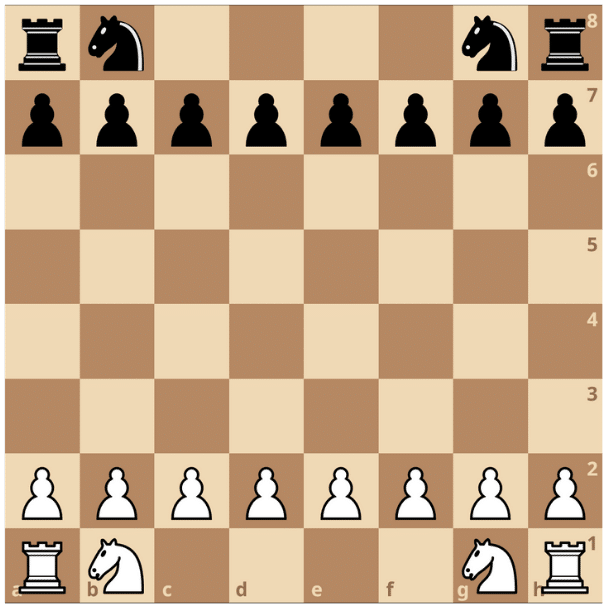
Step 5: Set Up the Bishops
Bishops can move diagonally across the board. They excel in open positions because they can control a whole Diagonal this way. Each player has two bishops, and they are valued at three (3) points each, just like the Knights. Tosetthemup:
- Place a bishop on the first rank (1st row) square immediately next to each knight for the white player (c1 & f1).
- Place a bishop on the eighth rank (1st row) square immediately next to each knight for the black player (c8 & f8).
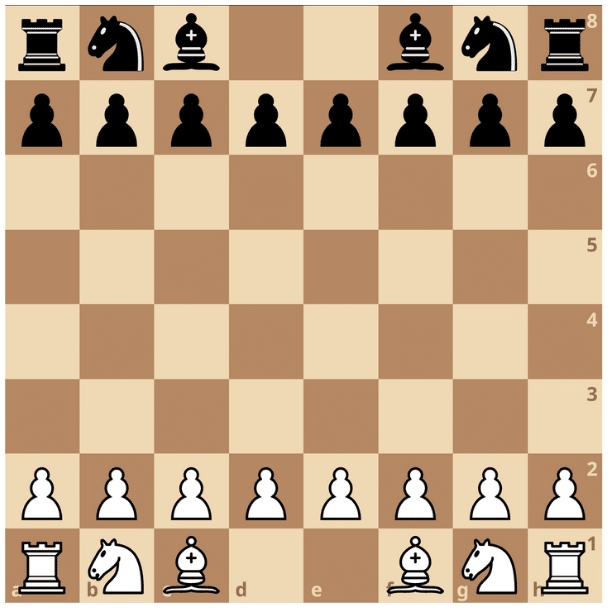
Step 6: Set Up the King and Queen
The king and queen are the most crucial pieces in the game. Each player has one king and one queen. The King has no value in points, as the game is over once the King is checkmated. So make sure to protect your monarch well! The King can move one square in each direction and thus is the least mobile piece.
The Queen on the other hand is the most valued piece with nine (9) points. One single Queen has the worth of a Bishop, A Knight, and 3 pawns combined! The Queen is a combination of Rook & Bishop: the royal lady can move horizontally, vertically, and Diagonally.
To set King and Queen up:
- Place the queen on the remaining first rank (1st row) square of her color for the white player (d1).
- Place the queen on the remaining eighth rank (1st row) square of her color for the black player (d8).
- Place the king on the remaining first rank (1st row) square next to the queen for the white player (e1).
- Place the king on the remaining eighth rank (1st row) square next to the queen for the black player (e8).
You did it! If your board is set up just like the image below, you are good to go. Before you start playing an exciting game of chess, let me shortly remind you of the most common mistakes I see when beginners try to set up a chessboard.
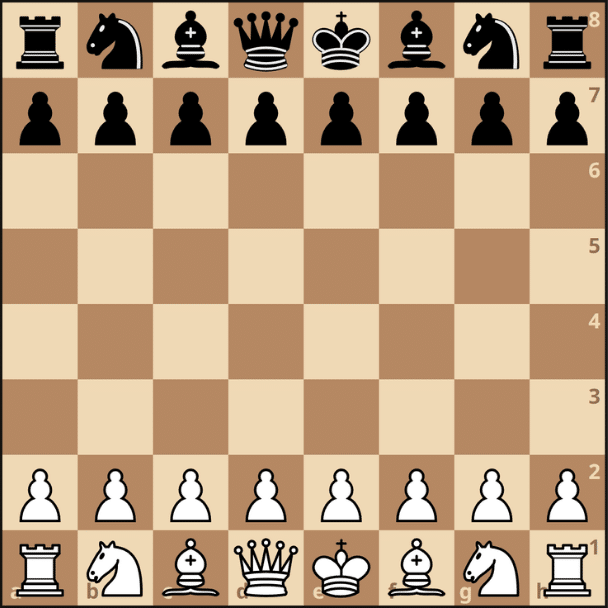
Mistakes You Need To Avoid
There are two main mistakes I see frequently when beginners try to set up their chessboards:
Mistake #1: Wrong orientation of the board
This happens to people who set up the board without Step #1. If you have a black square in the right-hand corner of the board for each player, you won’t be able to put the King & Queen on the right squares.
So really make sure not to step over this seemingly unimportant step #1.
Mistake #2: Queen on the wrong square
Remember: White Queen on White Square, Black Queen on the black square! If you set up the board with a friend, make sure that you also check their positioning of King and Queen.
Both Kings should be on the same file and the same goes for the Queens. If they aren’t facing each other, one of the two players did something wrong.
Don’t worry, just start the process again and I’m sure you will figure out what went wrong.
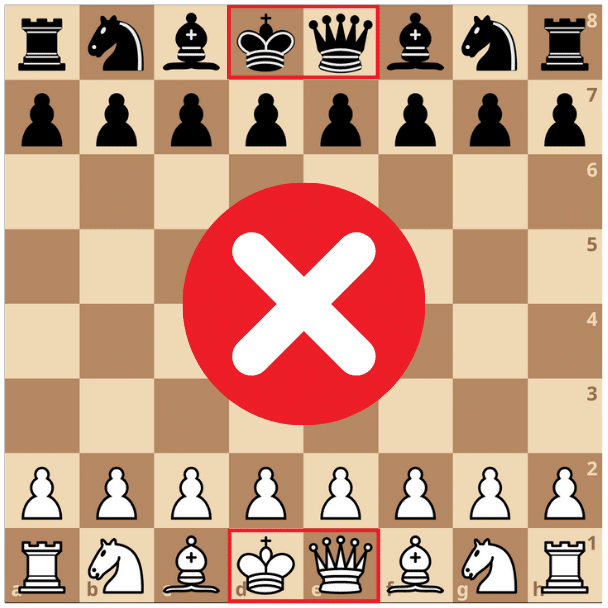
Conclusion:
Congratulations! Your chess board is now set up and ready for a game. Remember, practice makes perfect. The more games you play, the better you’ll become at setting up the board quickly and accurately. Soon enough, you won’t even have to think before setting up a chessboard. And if you just want to play online, the websites do the setup for you.
I recommend the 100% free Lichess as an amazing place to play some games. If you want to know more about Lichess, you can check out my free guide on how you can use this website to become better at chess.
Don’t forget to explore my other articles on chess strategy, tactics, and tips for continuous improvement.